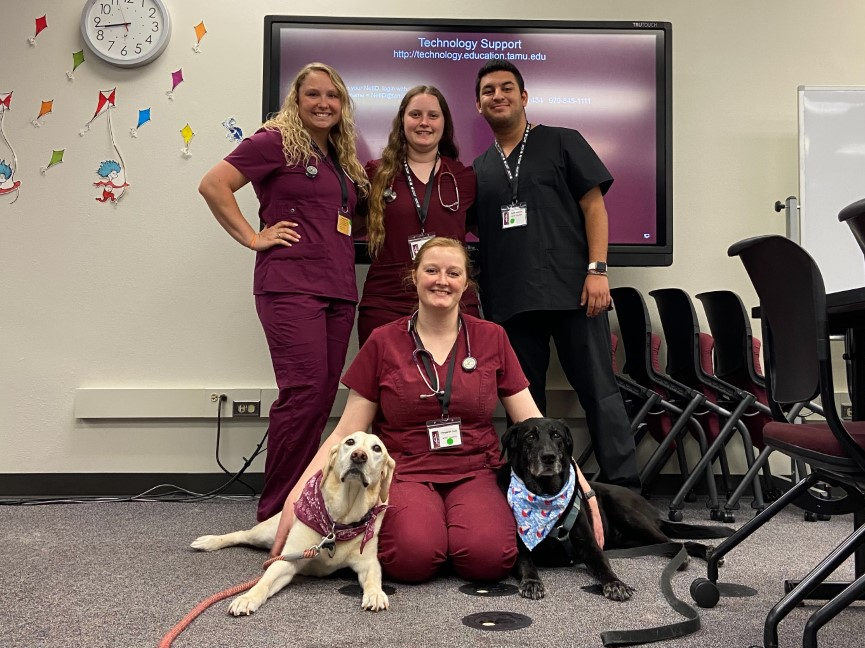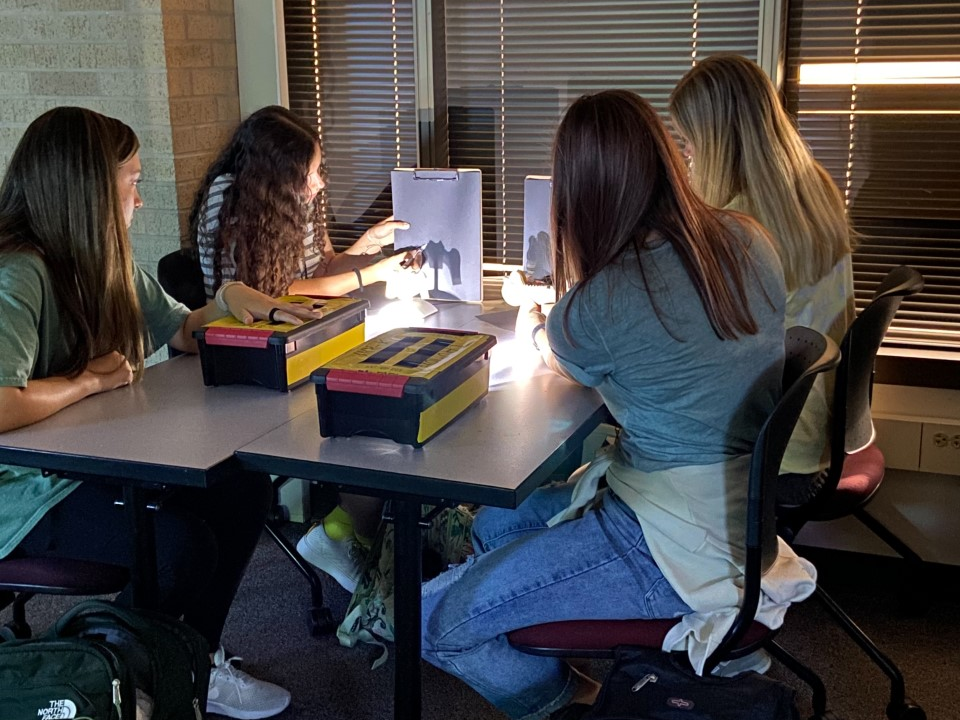Exploring STEM In Veterinary Medicine With The CVMBS’ PEER Program
Story by Kristen Watts, PEER Program

The Texas A&M College of Veterinary Medicine & Biomedical Sciences’ (CVMBS) Partnership for Environmental Education and Rural Health (PEER) program recently partnered with Aggie STEM Camp to create the week-long summer camp “Advancing Into STEM with Veterinary Medicine.”
This camp, held during the week of June 21 to 25, allowed high school students to explore topics in STEM (Science, Technology, Engineering, and Math) with a specific interest in veterinary medicine. Each day of the camp, students learned how the different areas of STEM relate to veterinary medicine.
On the first day of camp, Science and Technology in veterinary medicine were the main focus. PEER Veterinary Fellows discussed the different scientific components of a physical exam and the importance of getting a history on the patient so that a successful diagnosis and treatment can be administered.
Then students were able to brush up on their knowledge of parasites by identifying and learning how veterinarians prevent and treat them. At the end of the day, the students learned about the technology of producing a radiograph, or x-ray, and were able to take their own “radiographs” using simulated x-ray machines.
The next day was filled with how Engineering is used in veterinary medicine. First the students learned how to calculate a heart rate by building a stethoscope using several household items. These students saw how a simple instrument was engineered to hear our most vital organ, the heart.
Next, orthopedic procedures were explored, with a discussion of how veterinarians approached these surgeries. This was followed by a stuffed animal bandaging activity that rounded out the engineering component of STEM.

On the third day of camp, the theme was Mathematics and how veterinarians make calculations such as dosages, fluid rates, and heart rates every day. After learning about all the types of calculations used in veterinary medicine, students discovered why fluids are important and that there are different types of fluids that we give our patients.
This day concluded with an activity in which gummy bears were placed into different types of fluids and students were able to see what happens to cells under each of these conditions.
After learning how each part of STEM relates to veterinary medicine, the fourth day of camp had students putting together all the concepts they learned throughout the week to work through a case study. Each group was given the opportunity to create their own treatment plan.
The small teams of students were given free rein to how they would approach the case, and could utilize any of the tools they had learned throughout the week to figure out what was wrong with the patient. The PEER Program provided two live dogs, Anna and Snoozy, for the students to take vital signs and simulated radiographs on during the STEM camp.
On the last day of camp, students learned about the journey to becoming a veterinarian and were given an overview of the careers in veterinary medicine.
If you are interested in scheduling a virtual or in-person educational outreach event for your students, you may contact the PEER program at cvmpeer@cvm.tamu.edu. To check out some of PEER’s free educational resources, visit: https://vetmed.tamu.edu/peer/teacher-resources/.
###
For more information about the Texas A&M College of Veterinary Medicine & Biomedical Sciences, please visit our website at vetmed.tamu.edu or join us on Facebook, Instagram, and Twitter.
Contact Information: Jennifer Gauntt, Director of VMBS Communications, Texas A&M College of Veterinary Medicine & Biomedical Sciences, jgauntt@cvm.tamu.edu, 979-862-4216


